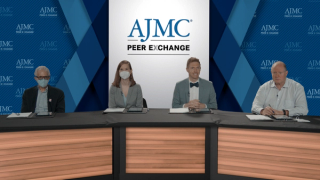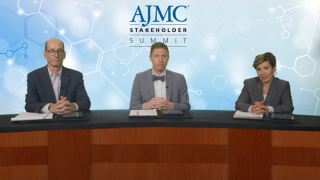
Clinical
Latest News

Latest Videos

CME Content
More News

This randomized, multicenter study of children and adolescents with new-onset type 1 diabetes (T1D) investigated the effect on glucose control of a closed-loop system, using C-peptide levels to gauge response

Carl Schmid and Lynne H. Milgram, MD, MBA, CPE, conclude with sharing ideas that can provide more substantial access to PrEP and battle unmet needs in PrEP management.

Drs Palella Jr and Milgram explains the disconnect between PrEP and patient education and comments on how to fix it.

Carl Schmid and Dr Milgram discusses the disparities in education and access to PrEP in the patient populations that need these medications the most.

Dr Uppal outlines population health management strategies directed to improve access to care and treatment management for patients with heart failure.

Dr Murillo navigates cost-saving strategies for heart failure treatment by emphasizing collaborative care between specialists and frontline primacy care teams.

Navigating payer and provider considerations to ensure optimal care management for vitiligo.

A variety of treatment options for vitiligo are explored by Drs Dunn, Rosmarin, and King.

The authors evaluate the effect and safety of biosimilar trastuzumab MYL-1401O in human epidermal growth factor receptor 2 (HER2)–positive early-stage (neoadjuvant and adjuvant therapy) and metastatic (palliative therapy) breast cancer using real-world data.

Amresh Raina, MD, is director of the Advanced Heart Failure and Pulmonary Hypertension Program at Allegheny General Hospital and the Allegheny Health Network in Pittsburgh, Pennsylvania.

Drs Agarwal and Pitt begin an overview of the CKD treatment landscape, beginning with the importance of blood pressure management.

Jeffrey Feldman, MD, describes the treatment goals for patients with CKD.
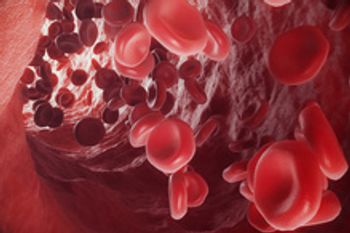
A review published in Transfusion Medicine Reviews discussed the 2 therapeutic approaches and their pros and cons for treating cold agglutinin disease (CAD).
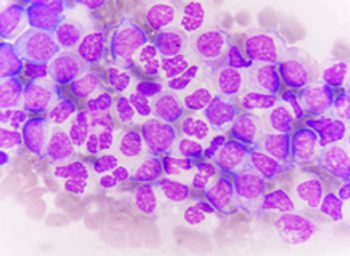
A review published in Frontiers in Oncology explored the application of allo-SCT for myelodysplastic syndromes and myeloproliferative neoplasms.

New data show litifilimab outperformed placebo in patients with active arthritis and skin manifestations due to systemic lupus erythematosus (SLE).

About 4 in 10 patients do not receive curative therapy despite early detection, a new study shows.

In this interview with The American Journal of Managed Care® (AJMC®), Igor Puzanov, MD, of Roswell Park Comprehensive Cancer Center and Jacobs School of Medicine and Biomedical Sciences, University of Buffalo, discusses the state of treatment selection in the setting of resected advanced melanoma, why sequencing of therapies does not occur in the setting of adjuvant therapy, and best practices to keep in mind for patient education and managing their treatment-related toxicities.
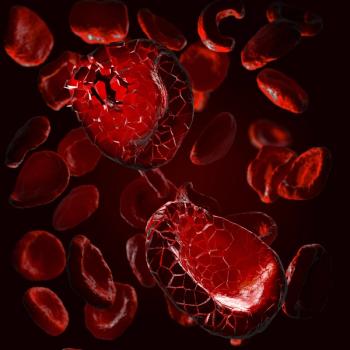
Chimeric antigen receptor (CAR) T-cell therapies may help patients with otherwise refractory cases of multiple myeloma, but patients must overcome significant hurdles to access the therapy.

A study found that patients who had no need of rescue therapy had a reduced risk of corticosteroid-related intraocular pressure (IOP) elevation when using SCS triamcinolone acetonide.

Hatim Husain, MD, discusses how National Comprehensive Cancer Network (NCCN) treatment guidelines adjust to meet the treatment needs of patients with lung cancer.

This study suggests that the diaphragm may fare differently from other muscles in spinal muscular atrophy (SMA).

Lynne H. Milgram, MD, MBA, CPE, speaks about the USPSTF Grade A recommendation for injectable cabotegravir and how it could affect emerging agents in the future.

Dr Milgram focuses on the cost-effectiveness of cabotegravir as a long-acting injectable PrEP therapy and how providers and payers use data and real-world evidence to create PrEP policies.

The impact of SGLT2 inhibitors in heart failure treatment is highlighted by the EMPEROR-Preserved and EMPEROR-Reduced trials.

Jaime Murillo, MD, outlines payer utilization management strategies identified by the PARADIGM-HF study.





